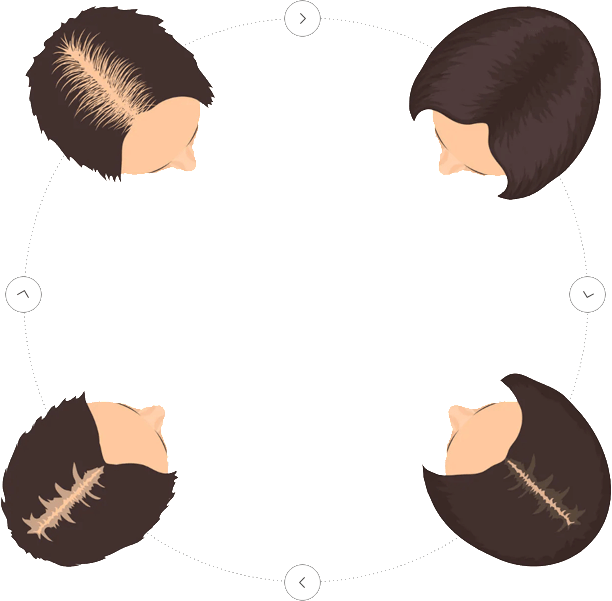The Hamilton-Norwood Scale
For men, hair loss tends to follow a typical pattern. Yet, before James Hamilton came up with his 7-stage scale, there was no standardized way to measure or describe degrees of baldness. Thanks to him and to O’Tar Norwood, who revised the scale, improved it, in the 1970s, we now have a tool that is used to describe the stages of male pattern baldness.
Our specialists use this tool to understand the progression of a patient’s hair loss and to determine a protocol for hair restoration. A person with stage 1-3 requires less intervention than does someone in a later stage. This is why it’s good to come in before your hair loss becomes advanced.
GET IN TOUCH WITH US NOW
The Stages of Hair Loss
This stage marks the lightest hair loss with thinning at the temples that often goes unnoticed or is ignored.
In a close continuation of stage 1, the balding near the temples moves inward, creating that M-shaped hairline you see in men who are just beginning to lose their hair.
The temple recession continues until there’s little to no hair in the temporal regions (at the temples). It is at this stage that the hair on the top of the head becomes thinner with bald spots starting to appear.
At this point, there’s no denying that you’re experiencing male-pattern baldness. You develop noticeable bald spots. The hair on the crown of your head thins and you may lose large patches of hair at the back of your head at the vertex or on the front of your head.

The Ludwig Scale

Female hair loss is a bit more complicated. It tends to follow less of a pattern and often manifests as a general thinning and without the hairline recession that men experience. Yet, the Ludwig scale was developed to describe the severity of a woman’s hair loss. It includes 3 grades 1 – 3 and is based on how much of the scalp is visible from the front due to thinning hair.


